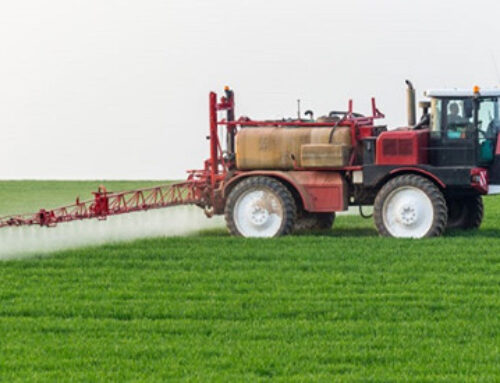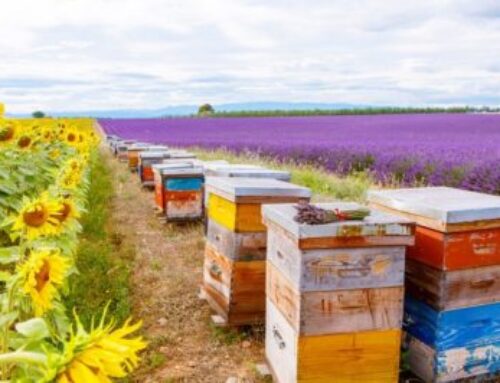GMOs (Genetically Modified Organisms) are rampant in modern agriculture. Much of our clothing, fuel, food and many of the products we use contain GMO corn, cotton, canola and/or soy. Genetic modifications have been used to create disease and drought-resistant crops that yield greater returns than other crops* but, as a nutritional therapy practitioner, I am innately suspicious of “food” products invented in a laboratory.
Are GMO products safe? Many will say yes. The studies that prove otherwise are difficult to find because condemning science is often hushed by the companies who manufacture these products. In my opinion, that is proof enough that GMO products are unsafe. Let’s explore some more reasons why they are dangerous to our health.
A GMO is any organism whose genetic material has been altered by a genetic engineering technique. A GMO is different from hybridized plants that occur naturally in nature and also with some help from man. Our beautiful fruit trees were bred through hybridization to produce the sweet, juicy fruit we all love. The fruits we enjoy today did not start out that way. Original fruit was small, tough, fibrous, and sour. Over the last 2000 years, humans have selectively bred most of our wild fruit trees to produce sweeter and more delicious fruit. Hybridization also occurs naturally when plants cross-pollinate and share seeds. For example, grapefruit was naturally created in the 1700s when a sweet orange tree cross-pollenated with a pomelo tree. Corn has a long history of hybridization. It is thought to have originated in prehistorical Mesoamerica when indigenous peoples intentionally cross-bred native grasses to create a sturdy, versatile food source. Corn is cultivated worldwide for food, animal food, fuel and many non-edible products and is a primary target of GMO manufacturers. Today, there are over 142 million acres of GMO corn worldwide (1).
Genetic engineering, which has been experimented with since the early 1970s, is different from plant and animal breeding or hybridizing, as the process of genetic engineering can never occur in nature. With genetic engineering, genes from one species of plant or animal are inserted into the genetic material of another plant or animal using a gene gun, creating a new species of plant or animal never before seen in nature. This transference of genes between species has been used on many organisms, from corn to pigs and even human genes have been inserted into a variety of rice grown in America (2). Swine genes have been inserted into tomatoes, Arctic flounder genes have been inserted into tomatoes and now we even have a pig that glows in the dark! (3).
My biggest concern about GMOs is the lack of research. The research required to be certain these new species are safe for the environment and for our bodies has not been done. The few studies we have are mostly funded by biotech companies and many people have criticized them for being rigged to avoid finding problems. When independent studies do discover problems with GMOs, the scientists are typically hushed, threatened or fired and no follow-up studies are done (4).
The potential for financial gain from these engineered crops is just too high for the manufactures of GMO foods to be ethical. Giant chemical companies like Monsanto, DuPont and Dow Chemical wield enormous power and influence, making it quite easy for them to “prove” to the public that GMO crops are safe. In addition, many high-ranking FDA and USDA officials were previously employed by the biotech companies producing GMO products. Would a former Monsanto employee pass a law or regulation that inhibits the production or sale of GMO products? This explains why non-GMO laws are so difficult to pass.
Despite what biotech companies say, there are food products that are problematic. In 2013, just about 90% of the corn planted (that’s 95 million acres), in the US was genetically engineered (Environmental Working Group). And that number keeps growing each year. The bulk of the corn grown here is used as animal feed but 12-15% ends up in foods that are consumed by humans, like corn oil, corn syrup, corn meal, corn flour and corn starch. These products are found in most of the processed foods consumed in huge amounts by the American population. Whether or not they are aware of it, most Americans consume GMO products in multiple forms every single day.
GMO corn is genetically engineered to have an insecticide in it. Bacillus thuringienses, Bt, is a natural soil-dwelling bacterium that causes the stomachs of caterpillars and other insects to explode when consumed. Bt has been used for decades as a natural pesticide by organic gardeners. Genetic engineers inserted the toxin-producing gene of Bt into the DNA of corn (and cotton), making GMO corn and cotton registered environmental insecticides (go back and re-read that sentence…the plants we grow on a massive scale are registered as insecticides!). Any insect that takes just a bite of a GMO corn plant is doomed.
The belief has been that Bt is totally harmless to humans and therefore consumption of Bt corn is not a problem for us but it appears this is not the case. The Environmental Protection Agency originally claimed that the bacteria was destroyed by digestion and that we don’t have a receptor for it anyway. However, there is evidence that shows this could not be further from the truth. The Institute of Science in Society researchers documented that Bt toxin is toxic to human kidney cells in low concentrations (5). The natural levels of Bt on vegetables picked fresh from the garden is very low due to the fact sunlight degrades Bt, and because vegetables are typically washed before consuming. But once the plant has Bt engineered into its cells, it is possible for the toxin to be consumed in every bite. If it can break open the stomach of insects, can it be doing damage to our intestines also?
Many studies confirm the danger of Bt toxins. A 2011 Canadian study discovered that 93% of the pregnant women they tested had Bt toxin in their blood and so did 80% of their unborn fetuses (6). How could the Bt have gotten into the blood of the women and the babies? The author of the study thinks it could have come from the meat of animals that were fed GMO corn feed, along with the typical foods of the Canadian middle class. A 2008 Italian study found that Bt corn provoked profound immune response in mice (Mercola). In India, it is a common practice to turn the livestock out on to the cotton fields to feed after harvest. This has never been a problem for the animals until Bt cotton was planted. Thousands of animals died, buffalo, goats, and sheep. Some even died the same day! Many reports and hospital records in India show that thousands of agriculture workers experience rashes and flu-like symptoms after handling Bt cotton (6). The same thing happened to the people in Vancouver and Washington State when they sprayed Bt for control of gypsy moth. Over 500 cases were seen in local hospitals.
Perhaps the most tragic example of seed toxicity is when Monsanto “donated” GMO seeds to Haiti after the earthquake. This was, supposedly, a humanitarian relief effort but Haitian farmers soon found that the seeds did not grow well, destroyed their native seeds and depleted the soil of nutrients. Once GMO crops are planted, it is very difficult to return to natural or organic farming. Therefore, many desperate Haitian farmers who accepted Monsanto’s “gift” lost their crops, their land and their income. Some resorted to suicide by consuming the toxic seeds they had been given (7).
Can these seed toxins be contributing to the significant increase we are seeing with autoimmune disease and other gut related issues? One study found Roundup-Ready gut bacteria in humans. (Roundup-Ready seeds, patented by Monsanto, are chemically resistant to Monsanto’s popular weed killer, Roundup). This means that at some point, the subjects ingested a meal of genetically modified corn or soy and that gene transferred its DNA to the bacteria inside the intestines (Mercola). The implications for this are huge.
The rising disease rates we have seen in the US correlate with the introduction of GMOs in 1996. Within 11 years, the number of children with chronic diseases went from 12.8% to 26.6% (8). Emergency room visits for allergies doubled from 1997 to 2001 and overall food related illnesses doubled from 1994 to 2001. Today, there are five million kids with food allergies. Physicist Nancy Swanson put together charts showing the high correlation between areas of high GMO production and the incidence of many disorders in the US including: thyroid, kidney and liver cancer, obesity, hypertension, diabetes, autism, dementia, IBD and arthritis.
When GMO products began to flood the market, some scientists warned of their dangers and health risks (6, 9). Now, years later, those scientists are vindicated. The American Academy of Environmental Medicine says animal studies show GMO food are linked to infertility, immune problems, accelerated aging, organ damage and gastrointestinal problems (10).
I read recently that thousands of US physicians now prescribe non-GMO diets to their patients. The Institute for Responsible Technology has been collecting data from consumers, physicians and patients about dramatic improvements in health and relief from symptoms from a wide variety of diseases and disorders after removing GMOs from the diet (11). Many doctors are seeing that when their patients stop eating GMO foods, their symptoms improve. The American Academy of Environmental Medicine now strongly recommends that people stop eating GMO foods, as they are not fit for human consumption (12).
Where can you find (and eliminate) GMO products in your diet? Corn (90%), soy (93%), and canola (90%) are the largest GMO food products. Hawaiian papaya (more than 75%) and Chinese papaya, zucchini and yellow crook neck squash (more than 24,000 acres), sugar beets (95%), alfalfa for livestock, tobacco, and cotton (70%) are also common. Many of these crops are used to produce food products such as the oils, flours and sugars used in processed foods. New products are constantly being developed and approved. An apple called the non-browning arctic apple is awaiting approval, as is a breed of genetically modified salmon. And, as we explored earlier, biotech companies are well-positioned to make it difficult for consumers to avoid these products as they flood the market.
I believe that educating people is the best way to make change. I would like to see GMO foods labeled, but the fight against labeling GMOs has been intense and disheartening. Vermont and Connecticut both passed laws requiring the foods that contain GMOs have labels that say so. California, Oregon, Colorado and Washington have tried to pass laws requiring labeling but all were unsuccessful. Recently, a labeling bill before Congress has passed the first step. It is lovingly referred to as the Dark Act, (Deny Americans the Right to Know). If the bill is passed, GMO labeling will become voluntary and even the states that have passed labeling laws will lose that right. What can you do? Educate yourself about which foods contains GMOs and avoid them. It is important for your health that you are aware of the foods impacted by GMOs and can choose to avoid purchasing them. Until GMO labeling laws are passed (who knows how long that will take!), I suggest following this Non-GMO Shopping Guide for great information on what to stay away from.
*Many will use the argument that GMO crops can “feed the world”, meaning we need modified seeds to grow enough food for our growing population. This argument is weak for several reasons. First, the majority of GMO crops are not being used to feed the world, they are being used to feed animals—animals who are being intentionally over-fed so they grow bigger and fatter, not to mention that cows are not supposed to eat corn. Their stomachs are designed to eat grass. Ergo, antibiotics and other chemicals that allow feedlot cows to stay alive while eating food that is, essentially, killing them. Second, while organic farming has been condemned for being labor-intensive and unrealistic on a large scale, organic farming creates a safe ecosystem and does not deplete the soil of nutrients like commercial farming with GMO seeds. GMO crops require massive doses of nitrogen and other chemicals to be sprayed on the soil each year, which inevitably make their way into our rivers and streams. While GMO crops may return a greater initial yield (5-25% greater, depending on the crop), they require chemicals and fertilizers to “fix” the soil and produce a completely unsustainable system. There is huge money to be made in inventing new crops that cause new problems and inventing new chemicals to fix those problems. Instead of continuing to do this, perhaps we should focus our efforts on ways to increase the yields of organic farming, which does not deplete the soil, damage our water system or kill our animals.
Many thanks to Sara Scheler for her contributions to this article; a subject I know she is passionate about.
For further reading, I recommend:
Michael Pollan’s books Food Rules and In Defense of Food are accessible, brilliant and easy to read. They are packed with information about the food system, GMO crops and what it all means to the consumer.
Animal, Vegetable, Miracle chronicles a family’s journey growing their own food for a year and takes a deep look at the food system from seed to plate.
Seeds of Deception exposes the truth about the safety of GMO foods.
Documentaries to watch:
The film GMO OMG follows a filmmaker and his young family on their quest to uncover GMOs in the American food system. It takes a family-friendly, humorous approach to a very serious problem and is an excellent film for an introduction to GMO products.
The documentary King Corn follows two friends as they grow an acre of corn and explore the plant from seed to plate.
Food, Inc. takes a deep look at our food system and how unsustainable and dangerous it really is.
Genetic Roulette: The Gamble of Our Lives, explains how genetically engineered foods harm you and your family.
Cited References:
- GMO Compass. Genetically Modified Plants Cultivation Area, Maize. GMO Compass; 2015.
- Worldwatch Institute: Human Genes in Rice: Opening up Pandora’s Pot? Worldwatch Institute; 2013.
- Conniff, Kelly. Scientists Create Glow-in-the-Dark Pigs Just In Time for your Next Rave. Time, Inc; 2013. Available here.
- Smith Jeffrey. Seeds of Deception, Exposing Industry and Government Lies About the Safety of the Genetically Engineered Foods You’re Eating. Chelsea Green Publishing; 2003.
- Institute of Science in Society. Bt Toxin Kills Human Kidney Cells. ISIS; 2012. Available here.
- Smith Jeffrey. Dangerous Toxins from Genetically Modified Corn found in Blood of Women and Fetuses. com; 2011. Available here.
- Bell, Beverly. Haitian Farmers Commit to Burning Monsanto Hybrid Seeds. The World Post; 2011. Available here.
- Swanson, Nancy Ph. D. What if the consumption of GMO crops or animals eating GMO crops were related to the rapid rise of chronic diseases? GMOFreeWashington; Accessed Oct. 2015. Available here.
- Druker S. Altered Genes, Twisted Truth, How the Venture to Genetically Engineer our Food Has Subverted Science, Corrupted Government, and Systematically Deceived the Public. Clear River Press; 2015.
- Dean, Amy D.O., Armstrong, Jennifer M.D. Genetically Modified Foods. American Academy of Environmental Medicine; 2009.
- Smith, Jeffery. 10 Reasons to Avoid GMOs. Institute for Responsible Technology; 2011. Available here.
- Dean, Amy D.O. Press Advisory – The American Academy of Environmental Medicine Calls for Immediate Moratorium on Genetically Modified Foods. AAEM; 2009.










